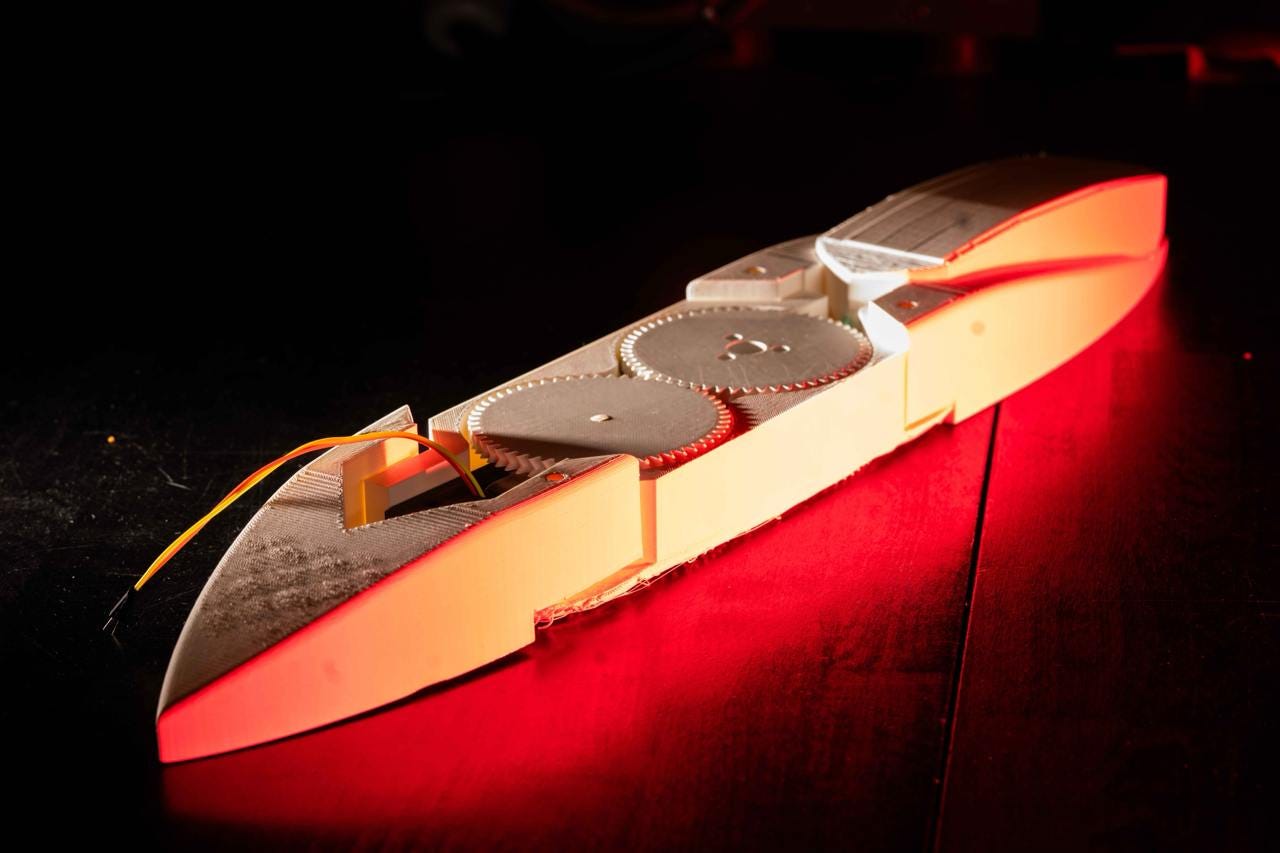This past weekend our second edition of the European Defense Tech Hackathon took place, at the Danish Technical University of Copenhagen, and the association of Danish engineers, IDA. We had 75 hackers spend the weekend working on maritime security, electronic warfare, efficient simulations of battlefield equipment combinations and much more. Thanks Benjamin Wolba and Satyam Goel for good collab on organization!
Only through organizing these types of events can we get to the important conversations with procurers, end-users and technical talent which is necessary to understand the space.
🤼 People
Jeffrey Saunders - CTO at National Defence Technology Center, Denmark
Colin MacLeod - CEO and Co-founder of Mutable tactics
Camilla Frost - COO at Normark Defence
Thomas Dybdahl Ahle - Head of ML at Normal Computing
This Friday I had the pleasure to moderate a panel with Jeff, Colin, Camilla and Thomas as part of the European Defense Tech Hackathon in Copenhagen. The hot topic was Navigating Defense Innovation: Building Strategic Capacity in the Nordics. We spanned the tactical perspective of mission autonomy startups, the procurement and innovation at a national level, broad-based strategic technologies like thermodynamic computing and how to enable collaboration between academia and private sector within defense.
💼 Portfolio jobs board
This weeks selection of opportunities from the portfolio:
RF/EE/AI superstar co-founder at EW-startup (dm for details)
🚀 ”Not yet Companies” (top three teams of the hackathon)
Disclaimer: it was incredibly difficult to choose the best teams among these, and there were many who are incredibly talented and did interesting things during the hackathon we don’t mention here.
“Fight or Flight” - UAV identification protocol
Status: Prototype
Source: EDTH
Founders: Benjamin Gurini, Khrystyna Rozhenko, Moritz Holz, Martin Kistler
Why it’s cool:
A large minority of all drones shot down by Ukrainian forces are, in fact Ukrainian drones. That’s largely because of the fact that there’s no practical way to identify if a drone is a friend or foe. The team out of Munich set up a simple cryptographic protocol that is not easy to spoof by the enemy, doesn’t broadcast the position unnecessarily and is easy to implement using existing hardware.
AquaHub - UUV navigation through deployable
Status: Prototype
Source: EDTH
Founders: Filip Bąk, Wiktor Kurdek, Jędrzej Drozdowski
Why it’s cool:
Filip, Wiktor and Jędrzej already won another defense tech hackathon this year, and spun out an underwater charging station company out of Poland. A huge problem with longer range, autonomous solutions is that water is very good at absorbing or reflecting RF signals (light too for that matter). This makes GNSS useless for underwater vehicles. One solution we’ve seen on the Toloka UUV is a telescope with sensing equipment sticking out of the water, but that requires the vehicle to be close to the surface. Filip and team prototyped deployable buoys with a GPS module and a comms cable attached to the subsea vessel.
Bruumbal - Autonomous swarming control of fly-by-fiber drones
Status: Prototype
Source: EDTH
Founders: Matus Bojnansky, David Hlavinka, Peter Zajac, Tomas Ondrejka, Mike Ondrejka
Why it’s cool:
Fiber optic drones are not entirely new technology, but neither is artillery. It seems to be very powerful and useful in Ukraine, where the spectrum is incredibly congested and constantly jammed. Detection systems are also increasingly abundant, making stealth ISR and one-way missions more difficult. The Bruumbal team of DTU students built out a system for autonomous control of a swarm of fiber-controlled drones, and ran Unity simulations on it.
💡 Ideas & Science
What’s the impact of AI on energy demand?
“Between 2010 and 2018, global data centre compute increased by more than 550%. Yet energy use in data centres increased by just 6%.⁵”
We know energy and sand (plus some other materials) are the necessary inputs to produce compute. But how much of the global energy goes to AI compute, aka how guilty should we feel for asking ChatGPT stupid questions, aka is the new “Flygskam” “GPTskam”? The numbers seem to say we’re fine. Data centers as a whole are pretty power hungry at around 1-2% of the total global energy consumption, but consider what we get for it! The entire digital world should surely be worth keeping alive and unrestricted! When looking at just AI-traceable data center use, it gets slightly trickier. Assuming the total NVIDIA servers produced in 2023 running at 100% as a proxy, we still don’t get to insane numbers, just 5-10TWh. That’s nothing compared to the 460 TWh of all data centers, transmission networks and crypto mining.
Related: Alien civilizations die from overheating because… thermodynamics
Found through Felix Neubeck’s excellent newsletter Deep Tech Demystified, this somewhat esoteric paper proposes that alien civilizations can’t reject enough heat from their planets and so after 1000 years or so of exponential growth get cooked. Unless they achieve sustainable extraplanetary life. With 1000 years you’d think we could get there… Or figure out a way to get rid of heat efficiently. (e.g., huge parasols, heat conducting space elevators or something).
Five protein-design questions that still challenge AI
We can design proteins and binders at a faster pace than ever before, but there are still some challenges unsolved by the current tooling. This Nature article outlines four key hurdles:
Designing binders with the right functional outcomes
Generating new catalysts outside of typical scaffolds
Calculating effects from environmental factors on the designed proteins
Extending the sophistication of designs to e.g., cellular transporters







Thanks for the shoutout - much appreciated 🙏🏼